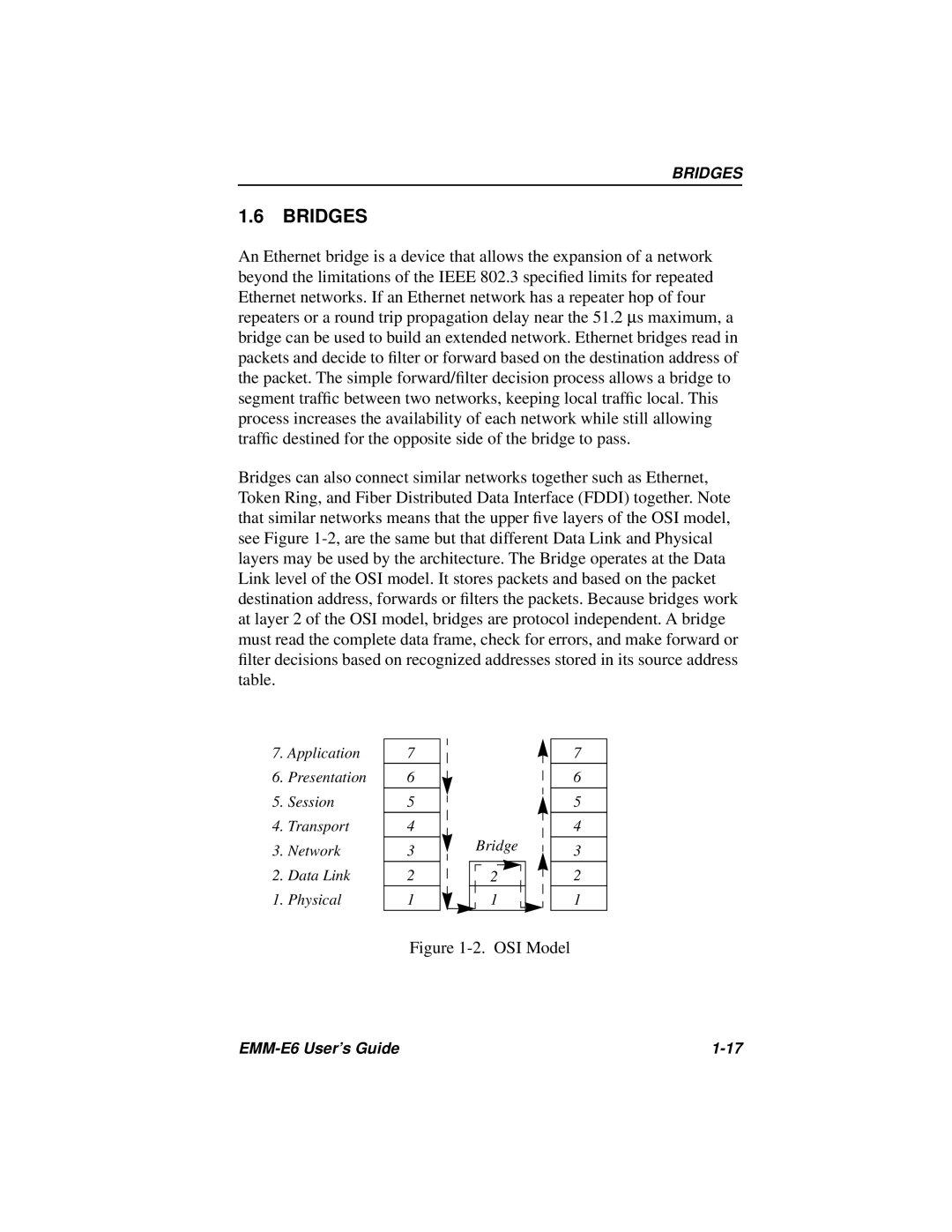
BRIDGES
1.6BRIDGES
An Ethernet bridge is a device that allows the expansion of a network beyond the limitations of the IEEE 802.3 specified limits for repeated Ethernet networks. If an Ethernet network has a repeater hop of four repeaters or a round trip propagation delay near the 51.2 ∝s maximum, a bridge can be used to build an extended network. Ethernet bridges read in packets and decide to filter or forward based on the destination address of the packet. The simple forward/filter decision process allows a bridge to segment traffic between two networks, keeping local traffic local. This process increases the availability of each network while still allowing traffic destined for the opposite side of the bridge to pass.
Bridges can also connect similar networks together such as Ethernet, Token Ring, and Fiber Distributed Data Interface (FDDI) together. Note that similar networks means that the upper five layers of the OSI model, see Figure
7.Application
6.Presentation
5.Session
4.Transport
3.Network
2.Data Link
1.Physical
7
6
5
4
3
2
1
Bridge
2 |
1 |
7
6
5
4
3
2
1
Figure 1-2. OSI Model
|
